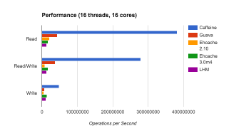0
Arista Countersues Cisco, Claiming Antitrust Violations
Two days before a ruling in a patent infringement case between the companies, Arista Networks is suing Cisco Systems for what it alleges are antitrust violations. Arista today filed a counterclaim to Cisco’s 13-month-old copyright infringement suit in the U.S. District Court, Northern District of California, for antitrust and unfair competition. Arista alleges Cisco conducts a “bait and switch” with its command line interface in which it claims it is an industry standard and then attempts to penalize competitors for emulating it.To read this article in full or to leave a comment, please click here

 Multiple hierarchies will transform the RAN topology.
Multiple hierarchies will transform the RAN topology.
 Take the Programmable Network Survey and enter to win one of three $300 Amazon Gift Cards.
Take the Programmable Network Survey and enter to win one of three $300 Amazon Gift Cards.